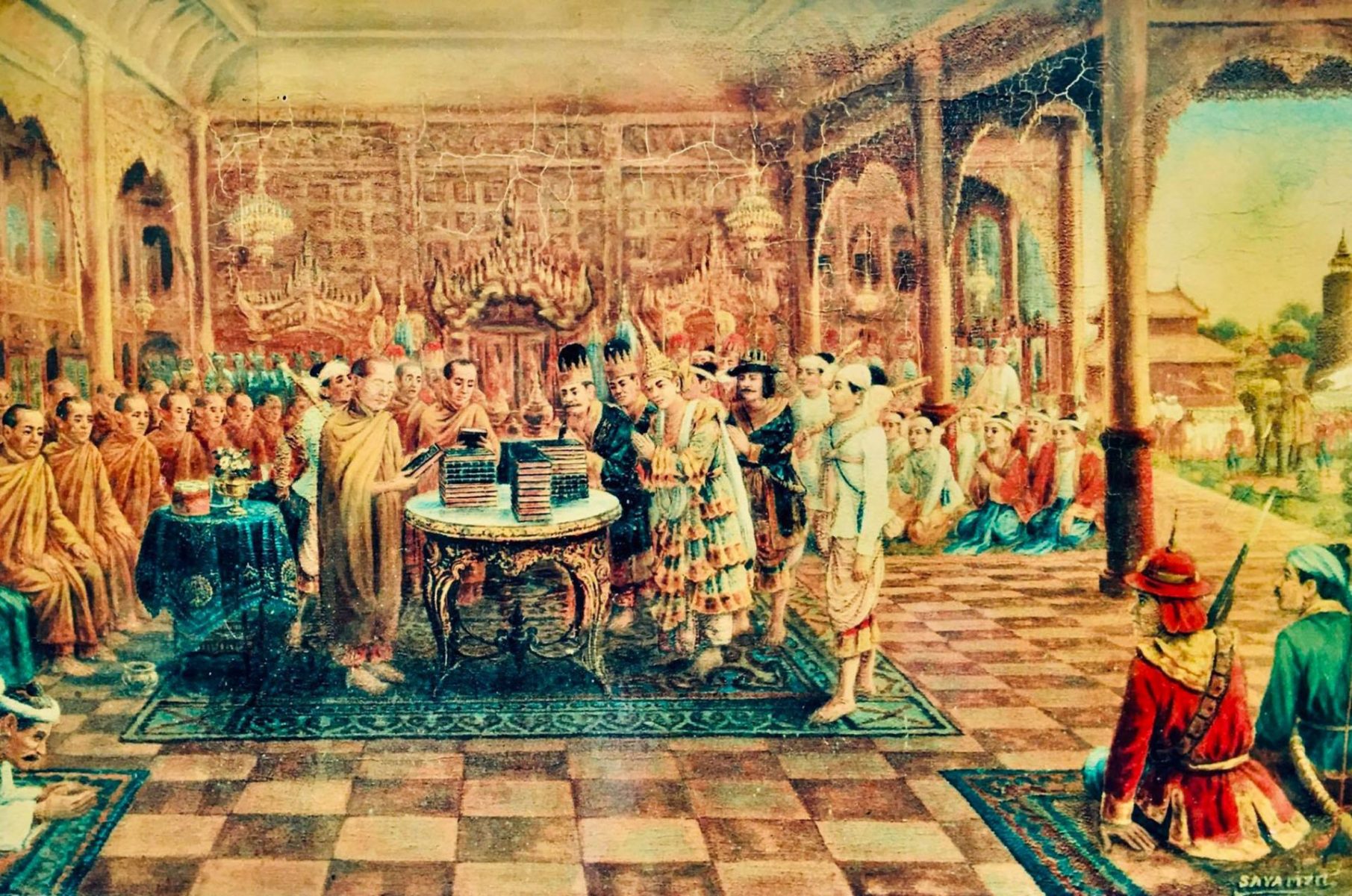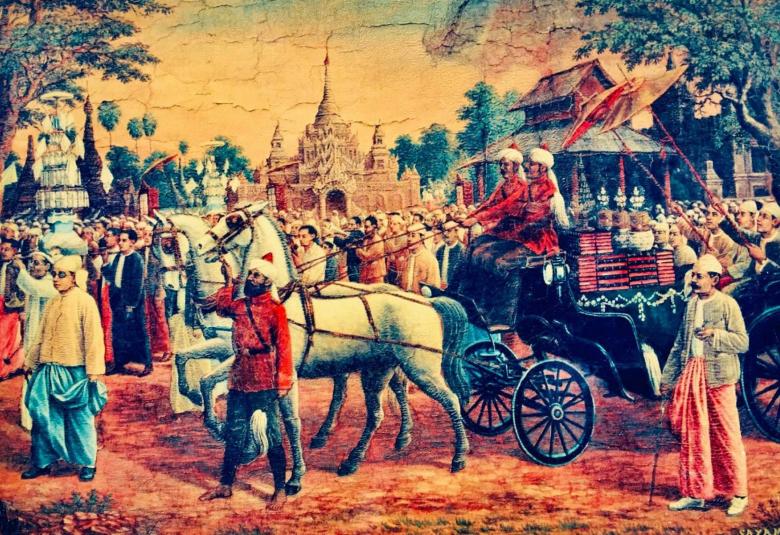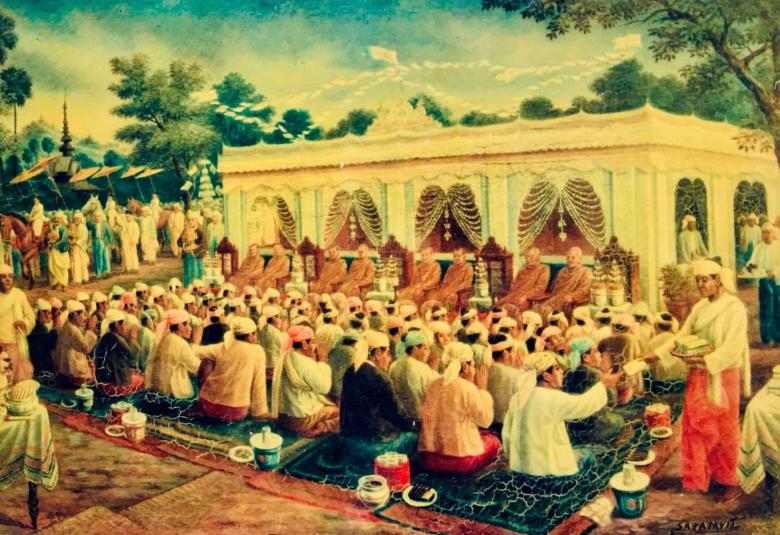19 Oct
In Myanmar, whose art history reaches back more than 800 years, displaying different painting forms and techniques, valuable works have been discovered, sometimes in monasteries, old colonial houses and from owners who did not have enough knowledge to realize they were sitting on – or staring at—a cultural goldmine.
In 1994, a local artist and collector discovered four valuable works of art in an old house in downtown Yangon. The paintings had hung under dim lighting in the house for decades, and were partially covered with fungus, dust and thick black smoke from the kitchen.
What was discovered was the art of Saya Myit, a major painter of the traditional school in Myanmar, and a well known painter in Myanmar’s art industry.
Myit was born in 1888 and died in Yangon in 1966, and was a prominent painter of Buddhist works, including Buddhist regional illustrations for books and religious ceremonies.
In Myanmar, Myit is considered the rare artist who can detail every small human figure, along with other features in his paintings.
Fortunately, four works of art by Myit were discovered by a local art collectorin an old house in downtown Yangon in 1994.
One day, Tin Win (Myanmar), now a prominent artist in Myanmar, was invited by a local antique collector to accompany him when he hoped to purchase an antique lamp in a house in Yangon’s Chinatown.
Being an artist, Tin Win was attracted to the four paintings hanging in the dim light of the house, owned by the publisher of books about Buddhist literature. He bought the four paintings after negotiating with the owner. However, the negotiations for purchasing the antique lamp were unsuccesful.
The artist knew that Myit was famous for detailed portrait paintings. But, the four paintings he purchased were an amazing surprise, because they reflected the late art master’s creation and skill in creating a group of people with superior perspectives, ratios, individual movements and expressions. All four works were 19 x 30 inch oil paintings on canvas.
Painting-1: The first painting depicted a religious ceremony, upon conveying the Three Tipitakas Books (Three Baskets of Learning taught by the Buddha) by a car. All the people in the painting are men during colonial times. The man in the left corner of the painting is seen as he points to give instructions to someone who is the sponsor of the ceremony. In the middle of the crowd there is a traditional orchestra and dancers.
Behind the car, there is a modern orchestra with an accordion player and a violinist from those days. In the middle of the crowd, three wooden cupboards are shouldered by men, and the front cupboard is seen under the two golden umbrellas carried by two men. Atop the pile of books there is a dancing peacock. Each peacock is attached to both of the car’s wind mirrors. The enter car is decorated with jasmine garlands, and its number plate is 26412.
Painting-2: Painting-2 depicts the books of Three Tipitakas, the three baskets of teachings by the Buddha, being conveyed in a cart driven by two horses. The main sponsor of the religious ceremony is the man with the walking stick seen in the right corner of the painting. Also in the painting are miniature trees decorated with cash and cupboards for the books. In the middle of the crowd, a modern orchestra is performing. The driver of the cart and the man who cares for the horse are seen to be bare foot, as a sign of respect for the religious books in the cart.
Painting-3: Painting-3 depicts a religious ceremony in which a king during the Yadanapon era donates the Three Pitakas books to the Members of the Sangha. In the centre-right of the painting, an elephant, which conveys the books, is standing, and a royal tower in the compound of Yadanapon Palace can been seen behind the elephant. Myit detailed the entourage of the king, Buddhist monks, a flower vase on the table and more.
Painting-4: Painting-4 depicts a novitiation or monastic ordination of boys. In the top-left side of the painting, boys to be ordained as novices are being conveyed on horses and under the golden umbrellas. At the rear of the procession, there are people carrying a tree-style donation created with cash. On the carpet, cups, water containers, betel containers, cheroots, matches and handkerchiefs can been seen.
By Aye Min Soe






